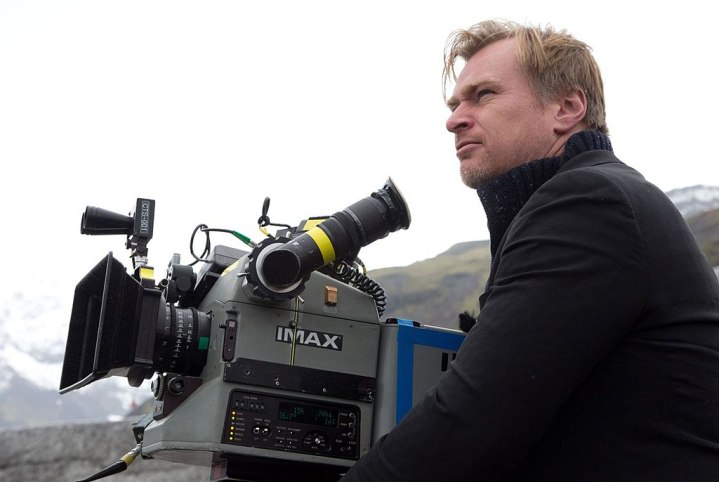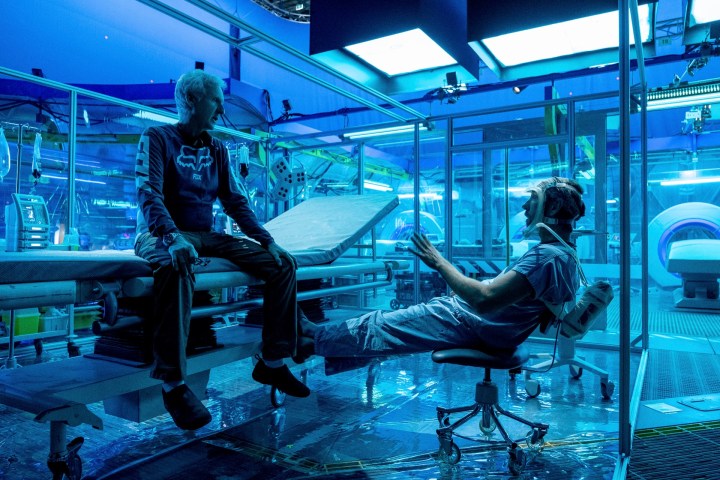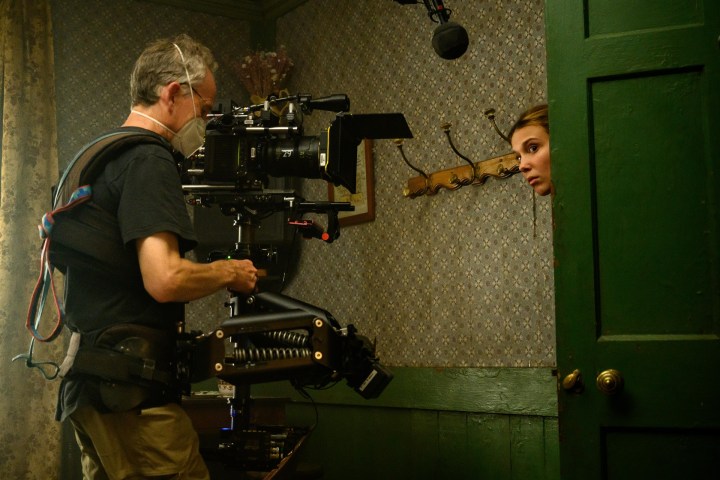

Throughout its more than 100-year existence, the film industry has undergone significant changes; after all, you don’t get to a 100-plus years without a few nips and tucks here and there. From the visuals to the sound to the equipment to the talent to pretty much every minute detail that goes into making motion pictures, the industry has experienced several revolutions, both major and minor. In the late 1970s, it was all about grit and how to make movies more realistic; at the turn of the century, it was about innovation with the dawn of 3D and other technologies. Today, the conversation almost entirely revolves around sustainability and how to introduce new, cleaner, and greener practices.
The urgency is understandable. By mid-August, 2024 was already on track to become Earth’s warmest year on record. The pressing need to go green has trickled down to every major industry, and entertainment is no exception. Film productions have been doing things to maximize efficiency and minimize their losses since pretty much the Golden Age, reusing sets and costumes and making the most out of the least. However, the 2010s brought a renewed interest in recycling and adopting greener practices, from the sets to the lightning equipment to even the cameras. Something as seemingly unimportant in this regard as a screenplay can play a big role in reducing waste and making a film production environmentally friendlier.
Make no mistake, the film industry is among the top generators of unnecessary waste in the world, and its practices went unnoticed for years before it started paying attention to its damaging practices. Now, filmmakers sing a different tune. From straightforward recycling to repurposing and even innovating to increase efficiency, the film industry is taking all manner of measures to become greener and less environmentally harmful.
How hard is the hardware to recycle?

Many elements go into a successful film production. From camera setups to lightning and ambiance, an average film will utilize multiple types of equipment to create the images you love to see on the big screen. Most movies use one camera throughout their shoot, favoring a digital setup to create that classic cinematic look. You know what I’m talking about; think of a particularly great movie and how it looks compared to, say, a TV show. There is a clear difference, whether it be image resolution, scope, color, or range; when something looks cinematic, you can instantly tell. Multiple factors go into creating this perception, from lightning and staging to cameras, lenses, sensors, and much more.
Well, turns out all these elements play a key role in whether a film production is less green or more. The new millennium and its endless digital innovations have been a true game-changer. Take the 2010 introduction of the Arri Alexa camera. It heralded a before-and-after moment in modern filmmaking and is still widely used over a decade after its arrival.

So what happened to everything that came before it, all those cameras and gadgets Hollywood used to make your favorite 2000s movies? They need to go somewhere. Well, companies like TechWaste Recycling and Great Lakes Electronics Corporation are leading the charge in that department, offering secure and responsible electronics recycling on a large scale.
Like most other tools, film cameras are delicate equipment that can’t very well be tossed into the garbage can. They contain dangerous metals, like lead or mercury, that can cause soil and water pollution and can even affect your health. However, companies like High Tech Recycling LLC will disassemble the cameras and separate the reusable materials (lenses, batteries, rubber) from the discardable ones, which will then either be safely disposed of or converted into other raw materials. This, in turn, reduces the need for additional mining of raw materials, further contributing to the betterment of the environment.
Let there be (sun)light

It’s not just cameras that can be recycled. Lightning equipment plays a huge role on a film set, creating the mood for all the scenes you enjoy. Only a few years ago, most sets used the average light bulbs that dominated the latter half of the 20th century before moving to more eco-friendly LED lights, which are far more efficient, longer-lasting, cooler, and safer than the now outdated incandescent bulbs. LED (light-emitting diode) bulbs produce light up to 90% more efficiently than incandescent bulbs and are already taking over the industry, with companies like Diode LED already working with titans like Disney. Similar to cameras, light bulbs need to be recycled so that valuable materials like glass and metal don’t go to waste.
Solar panels are also a wonderful tool that more film productions should implement. PGA Green, the nonprofit formed by the Producers Guild of America in 2009 to spread awareness of greener filmmaking practices, even encourages film productions to use one, and the potential results speak for themselves. In fact, many major film productions have already begun integrating these technologies into their shoots: most notably, James Cameron’s 2022 blockbuster Avatar: The Way of Water became one of the greenest shoots in recent history by using solar power for its two-stage production.

The more productions use these technologies, the quicker they’ll become normalized, not only for major blockbusters, but for all manner of productions, big and small. Canadian solar panel company Sun Kissed Energy hits the nail on the head: “Solar-powered filmmaking isn’t just about reducing emissions; it’s about inspiring viewers to envision a sustainable future.” Better yet, solar panels can be reused in other productions to power other sets, trailers, or lighting equipment. They can also be recycled, but the process is currently not particularly cost-effective. Don’t worry, though; a few companies are figuring out ways to make the process faster and better.
Solar panels are still seen as something of a luxury, and in a way, they are. Forbes reports a solar panel can cost anywhere between $8,500 and $30,500, which is a considerable investment for the average person, but major studio productions are far from average, and an investment of this kind should not be a luxury. The benefits far outweigh the costs, too, as panels can power anything from trailers to entire stages. If James Cameron could do it in the third-highest-grossing motion picture ever, the average film director can, too.
What dreams are made of

Legend has it that the sets of Cecil B. DeMille’s opulent 1923 religious epic, The Ten Commandments were dismantled and buried in the California desert. Built on the dunes near Guadalupe, California, the set brought ancient Egypt to life to tell DeMille’s ambitious take on the religious story of Moses and the stone tablets. Following the end of the shoot, DeMille ordered his creation buried in the sands, where it remained until 1983, when a group of intrepid explorers found it. Now known as the Lost City of DeMille, the set has become an infamous part of classic Hollywood history, even receiving an exhibit at the Dunes Center. There’s also a documentary about it (it’s free on Tubi, by the way).
Suffice it to say, we’ve come a long way since those days. Indeed, film sets are now seen for what they are: assets of a film production that hold an embarrassment of riches when it comes to materials and recycling possibilities. Think of all the elements that go into making a successful film set: wood, metal, plastic, paper, fabrics, etc. Sets usually have a better life cycle than most other filmmaking tools, mainly because it’s far easier to repurpose or recycle them, and that’s exactly what happens.
Most sets are dismantled, and their elements go in different directions. If there’s a potential to be reused, they are. For example, Steven Spielberg’s 2005 sci-fi War of the Worlds used the remains of a Boeing 747, which was then reused in Scary Movie 4 and videos for Nikki Minaj and The Fray. In other cases, film sets are donated to film schools or theater companies. Sometimes, they become tourist attractions — for example, you can actually visit Tatooine, provided you can afford a ticket to Tunisia. Finally, some movie sets are simply left to nature, like the town used for the ill-fated Jeremy Renner vehicle Hansel and Gretel: Witch Hunters, which now lies abandoned in the woods of Augsburg, Germany.
However, it doesn’t take a genius to understand recycling is the best option for large sets that have only a momentary use and contain large amounts of valuable materials. A report by PGA Green reported that recycling sets and props can cut costs by up to 40%. And for an industry that is constantly looking for ways to cut corners, a 40% saving is like a drop of water amid a drought. Nowadays, set recycling is a growing industry. Take the aptly named Recycled Movie Sets, which has a large inventory of reusable sets — over 30,000 square feet, in fact. They rent or sell to interested parties, saving countless sets from destruction and finding them a new purpose.
Green from the inside

Arguably, it’s not enough to just work from the outside when it comes to film productions going greener and embracing more sustainable practices. Instead, there must be a systemic change in the way studios approach filmmaking as a process through a deeper understanding of the negative impact they can have in the world, the positive change they can inflict, and the steps necessary to get there. The major issue the industry faces right now is actually understanding the term “sustainability” and separating it from the negative preconception that “more care” means “more spending.”
That’s where companies like Earth Angel come in. Founded by Emellie O’Brien, who received the “Earth Angel” nickname from on-set workers because of her commitment to sustainability and the environment, the company now offers a wide range of services, from waste disposal to asset recovery and donation. However, its services go beyond the day-to-day work on the set and into the corporate arena, as it specializes in “translating sustainability knowledge into production practices.”
Earth Angel’s “eco labs,” which range from one-hour workshops to multiple-day seminars, “provide insights into the triumphs and challenges of integrating sustainable practices into entertainment production.” Per the company’s words, its efforts focus on providing “a basic understanding of sustainability and carbon literacy” by offering tailor-made plans that fit the organization’s schedule, scope, and region. What’s more important is that these “eco labs” address many of the pressing doubts and concerns that individuals might have about sustainability in film production by offering tools to better handle them.
Embrace the green

Programs like this are vital to help raise awareness about what recycling truly means and entails. Anything that is a collaborative effort, including film productions, must realize recycling goes beyond what the studio can do and into what each individual can do. Maybe it’s something as simple as bringing a thermos to work to reduce plastic usage. It can be as low-effort as placing the garbage in the proper container. Recycling must become a way of life rather than something you can do to help. If studios and film productions want to truly go green, then they must start with the individuals that make up the cast and crew; in many ways, it’s they who must embrace the green.
It’s no easy task. However, the struggle becomes easier when one realizes the many ways recycling can influence a film’s production. New technologies emerge every day to make the process easier, from apps to rented garbage trucks to apps to help you understand what actually can be recycled. If society wants to keep enjoying a somewhat normal existence in an ever-changing world, it needs to adapt to greener practices, and that especially includes major businesses. Entertainment often goes unnoticed compared to Big Tech or Big Pharma, but it also plays an important role in this equation and can enact a positive change in both the short and long term. It’s high time for that to happen.



